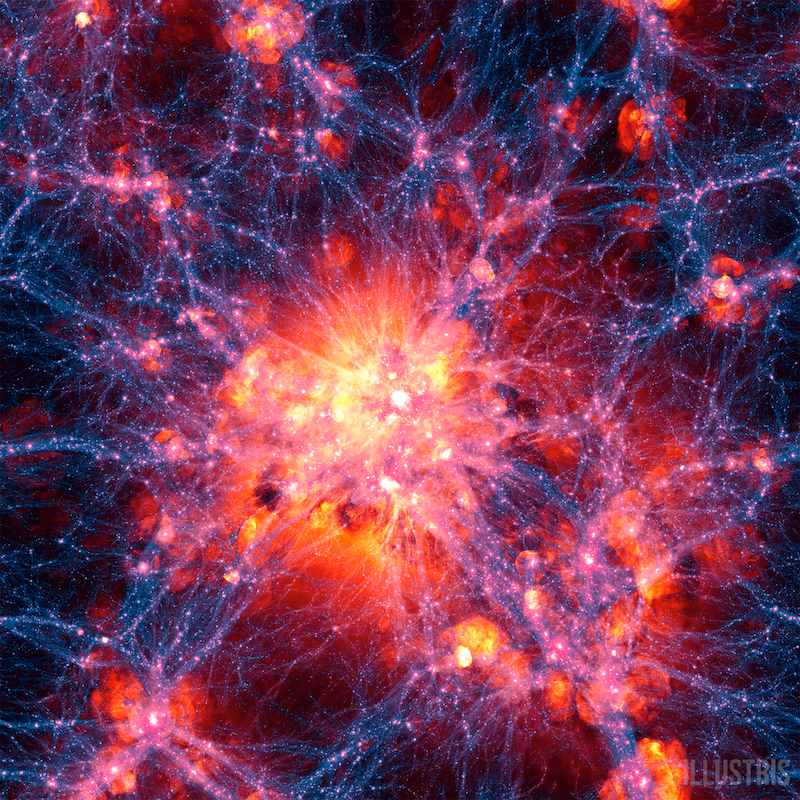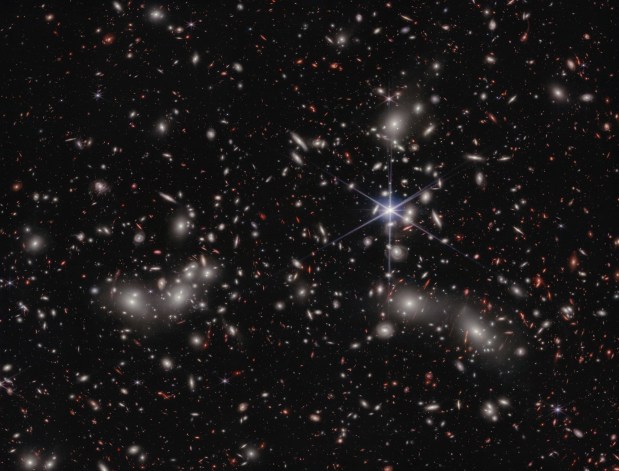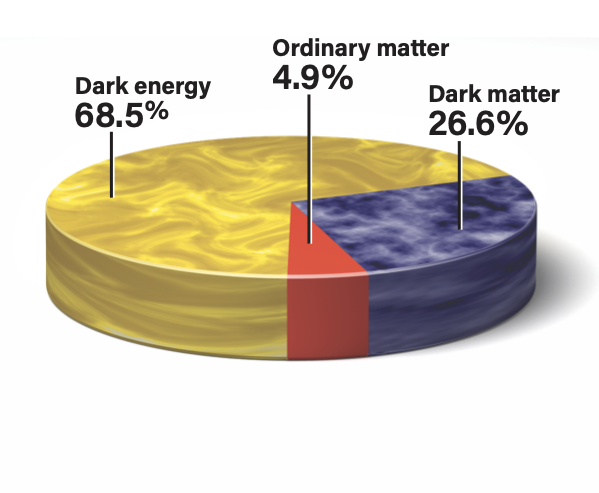
What is the cosmic web composed of?
Babak Emami
Seattle, Washington
Large observation programs that map the universe reveal that the distribution of galaxies is far from random. Such a deviation from randomness is called the universe’s large-scale structure, and the cosmic web is a building block of this structure.
In order of abundance, the cosmic web is composed of dark matter, gas, and galaxies. Dark matter, which makes up about five-sixths of the mass, does not interact with light but dominates the gravitational pull of the cosmic web. Dark matter provides the scaffolding for the formation of galaxies and galaxy clusters. The rest (one-sixth) of the cosmic web consists of normal matter: baryons (such as protons and neutrons) and electrons. It exists either in the form of intergalactic gas or as the stars and interstellar medium (gas and dust) in galaxies.
The gas in the cosmic web can be hot or cold, depending on its location. Gas within galaxy clusters is typically very hot, in the range of tens of millions of degrees. This material is known as intracluster gas or the intracluster medium (ICM). The ICM emits X-rays that can be observed, and it provides a way to study the distribution of mass within clusters and the history of cluster formation. The ICM also plays an important role in the evolution of galaxies within the cosmic web, as it can strip gas out of galaxies and prevent the formation of new stars.
Conversely, the gas in the filaments of the cosmic web connects galaxy clusters and superclusters, and it is typically colder, ranging from thousands to tens of thousands of degrees. This gas is known as the warm-hot intergalactic medium (WHIM). The WHIM is difficult to observe directly because it is not as hot or as dense as the gas in the ICM, and the light it emits does not penetrate very far into the universe before being absorbed. Nevertheless, the WHIM is believed to be a significant reservoir of baryonic matter in the universe. It may also play an important role in the growth of galaxies by providing a source of fuel for the formation of new stars.
Galaxies are grouped in clusters and superclusters and embedded within this cosmic web. Throughout their lifetime, galaxies continuously interact with the gas in the cosmic web: Gas from the web falls into galaxies to make stars, and gas within galaxies is ejected into the cosmic web by the winds from supernovae and active supermassive black holes. These interactions may hold the key to understanding the evolution of galaxies.
Donghui Jeong
Associate Professor, Department of Astronomy and Astrophysics, Penn State, University Park, Pennsylvania









